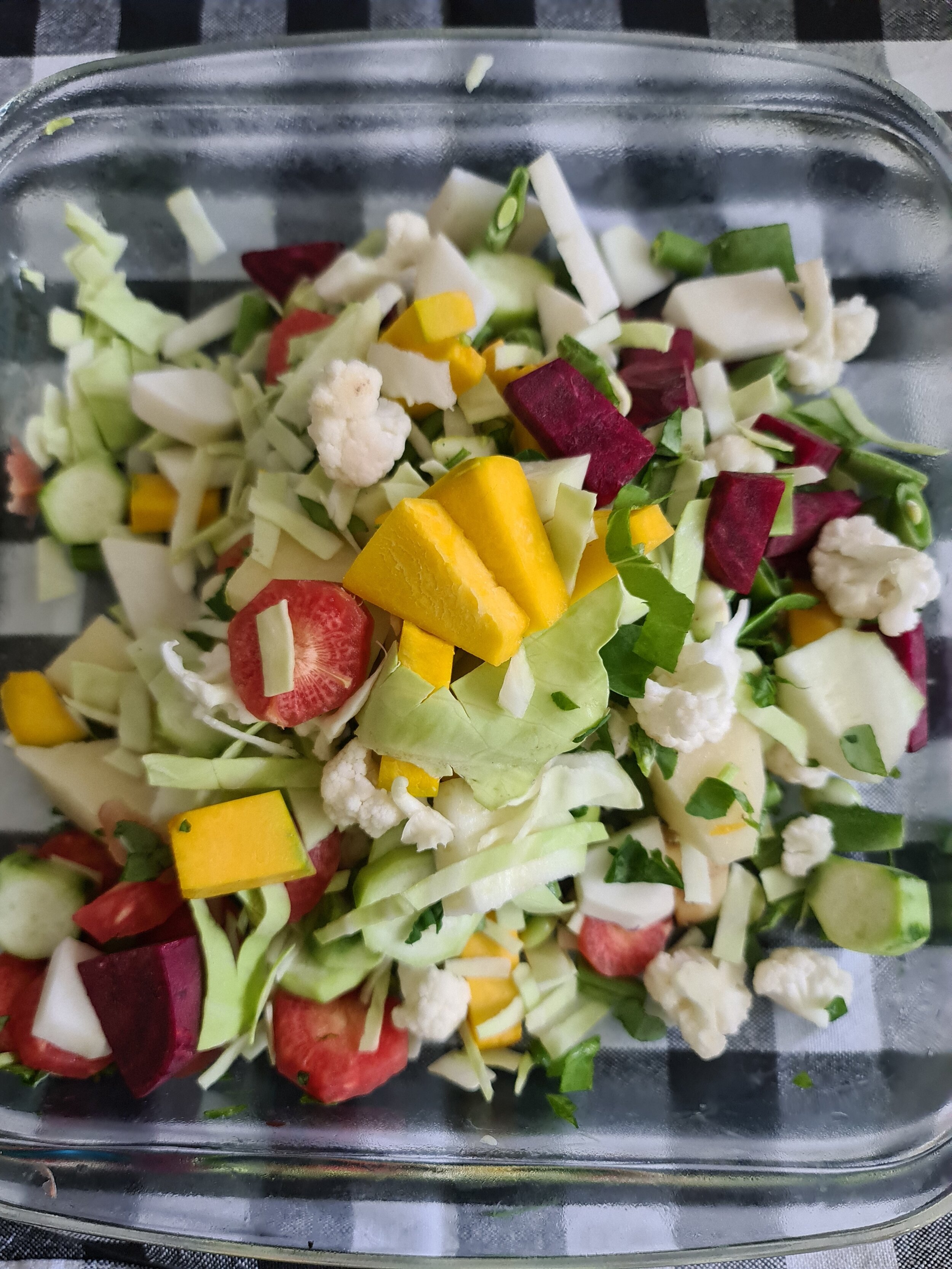A Winter Specialty: Bhogichi Bhaaji for Two

Bhogichi Bhaji is a traditional Maharashtrian recipe that celebrates winter’s unique produce in a vegetable stew seasoned with coconut, peanuts, and sesame.
Bhogi is a festival celebrated across the states of Maharashtra, Tamil Nadu, Andhra Pradesh and Telangana — also known as Lohri, Khichri, and Pongal, in other states across the country. To mark the passing of the winter, and new beginnings with the onset of spring, Maharashtrians celebrate with a quintessential dish, bhogichi bhaaji.
Each region celebrates the onset of spring with its own traditions. Gijji cooked in Karnataka bears a striking resemblance to the bhogichi bhaaji. Undhiyu, in Gujarat, is also a variation on bhogichi bhaaji, although it involves a different style of cooking. A recipe that marks the passing of winter, it features vegetables specific to the season, packed with nutrients, vitamins and proteins that provide warmth on cold winter days. Bhogichi bhaji is a wonderful way to use up the beans and root vegetables that are exclusive to winter.
“Often known as a one-pot meal, bhogichi bhaaji celebrates seasonal new vegetables and it is a great example of simple food being healthy, hearty, nutritious and tasty. Bhogi essentially celebrates everything new,” says Amita Gadre, a clinical nutritionist based in Pune.
This dish is typically cooked in large volumes, in a wide-bottomed pan that allows the vegetables to simmer in its juices. Needless to say, this takes hours (and can alternatively be cooked in a pressure cooker). However, if you choose to cook it in over open flame dish, make sure to stir the dish frequently to prevent it from catching at the bottom of the pan.
Recipe: Maharashtrian Bhogichi Bhaaji
(Serves 2-3 people)
Ingredients
1 tbsp carrots, peeled and diced
1 tbsp sweet potatoes, peeled and diced
1 tbsp tender baby potato, peeled and diced
1 tbsp purple brinjal, diced
1 tbsp hurda (raw green jowar gram)
1 tbsp of tender peas
1 tbsp tender peanuts
5 bers washed and stems removed (optional)
1 tbsp purple yam, peeled and diced
1 tbsp elephant yam, peeled and diced
A handful of French beans
1 tbsp turnip, peeled and diced
Diced sugarcane (optional)
2 green chillies, finely chopped
Fistful of beans (Val Papdi, ghevada, flat beans, hyacinth beans, broad beans, averekai or other winter beans)
Lime-sized ball of tamarind soaked in warm water
1 tbsp jaggery
For the dry roasted mix
1 tbsp peanuts
1 tbsp sesame seeds
2-3 tsps of desiccated coconut
1/4 tsp red chilli powder
For the seasoning
2-3 tbsps oil
1 tbsp of ghee
1/2 tsp cumin
1/2 tsp mustard seeds
A pinch of Asafoetida (hing)
1 tbsp of red chilli powder
1 tsp of coriander and jeera powder
1/4 teaspoon turmeric powder
1 tbsp goda masala (replace with garam masala if unavailable)
Salt to taste
Method
To make the dry roasted mix, dry roast each of these ingredients separately till they turn aromatic.
Add a bit of salt and red chilli powder and blend to a fine powder. You can also add water to this to make into a fine paste.
In a pressure cooker, add the oil and ghee. Let it smoke. Turn off the flame and add the cumin and mustard seeds. Let it splutter. Add the hing and sauté for just a few seconds. Add the finely chopped onions and fry till translucent.
Toss in all the vegetables mentioned above and sauté for about 8-10 minutes or till the vegetables start releasing water.
Add the dry roasted mix and sauté for another 5 minutes.
Add all the dry powders mentioned in the seasoning and give it a quick stir to ensure the spices have blended with the vegetables.
Add 100 ml of water and let it come to a rolling boil. Add the jaggery and the tamarind pulp.
Close the lid of the pressure cooker and cook for one whistle in a high flame.
Lower the flame and let it cook for at least 5-6 whistles.
Turn off the flame and do not force open the lid. Let it cool completely.
If there is excess water, place on low flame to reduce the water to get the desired consistency.
You can serve this dish with jowar, bajra or chawal ka bhakri. It is equally delicious with idli, dosa, appams and can also be turned into a sandwich filling
Tip: A radish koshimbir is an excellent accompaniment to this dish. Grate red radishes and add it to whisked curd. Add salt and temper with cumin seeds, curry leaves and mustard seeds. Add salt to taste.
ALSO ON THE GOYA JOURNAL








